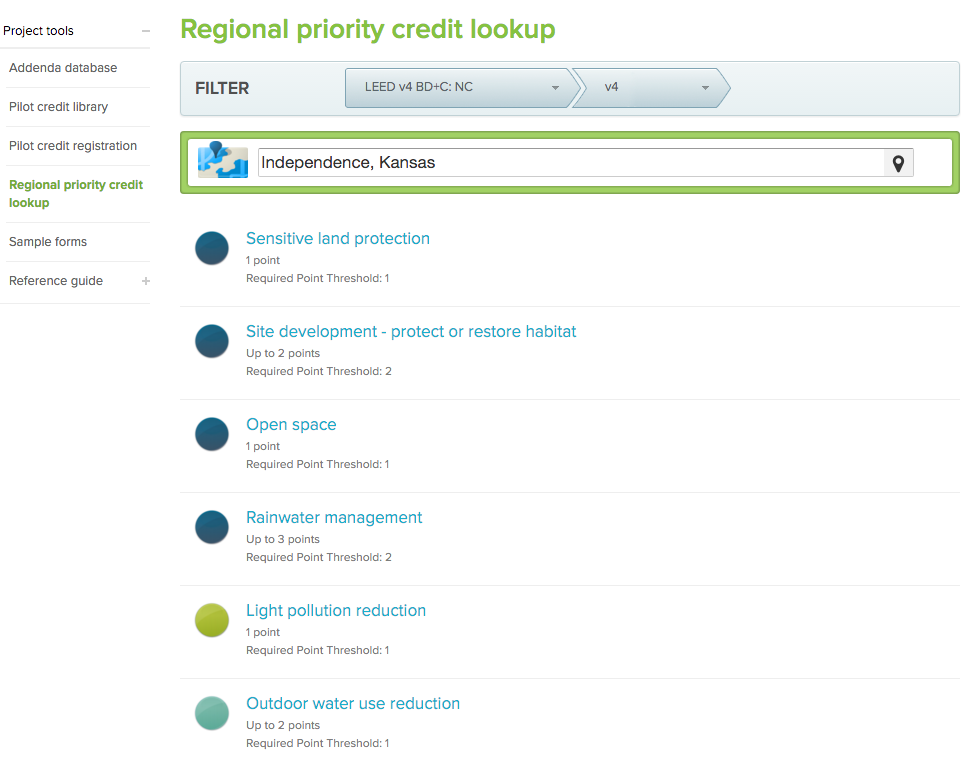USGBC's regional priority credit lookup tool
RP credit zones were created by USGBC using a Geographic Information Systems (GIS)-based program that allowed environmental issues to be empirically mapped. These bonus points are earned by achieving credits that have been designated as particularly important for your project's specific geographic location. (Note that this is a change from LEED 2009, which used zipcodes.)
Automatic achievement
RP points are tied to existing LEED credits; they aren’t new credits written for your region. You don’t have to do anything to attempt them other than what you are already doing. If your project earns these designated priority credits, it automatically achieves RP points.
A total of six RP options are available to all projects. However, projects can only earn a total of four RP points. There’s no need to worry about selecting which RP option you want to pursue–this happens automatically through LEED Online based on the normal credits you attempt and achieve.
What to expect
Environmental zones are defined based on multiple factors and can differ across a state, or even within a city. Significant differences are based on the following factors.
Climate
You can expect water-related credits to be given high priority in arid climates.
Renewable energy is often given priority in sunny or windy regions.
Ecology and geography
Stormwater is a common priority for coastal areas and sites adjacent to major rivers or water bodies.
Habitat protection and restoration is assigned to many regions in the Western U.S., as well as to areas such as the Mississippi Delta and Florida Everglades, which contain large areas of critical natural habitat.
Differences in policy
Energy performance is assigned as a regional priority credit in many areas, though less frequently in states that already have high standards for energy efficiency, such as Oregon or California.
Using USGBC’s Regional Priority credit lookup tool
You can determine the RP options for your project by using the Regional Priority credit lookup tool on USGBC’s website. This tool has RP options for projects located inside and outside the U.S.
Just remember that you’ll need to enter your project’s physical coordinates to get an accurate list of RP options. The RP credit lookup tool accepts coordinates in decimal degrees (e.g. coordinates in degrees and decimal minutes will not work). Zipcodes can no longer be used to identify your project’s RP options.
